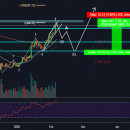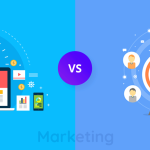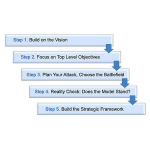
Ways to do “Brand Promotion” and “Brand Enhancement” is different from one another?
Branding is a crucial aspect of any business, and it can make or break its success. A brand is more than just a name or a logo; it’s the identity of a business. Branding involves creating an image in the minds of consumers that can differentiate a business from its competitors. Two critical aspects of branding are Brand Promotion and Brand Enhancement. While they might sound similar, they have distinct differences. This blog will explore the difference between Brand Promotion and Brand Enhancement.
Brand Promotion
Brand Promotion refers to using various marketing techniques to promote a brand and increase its visibility. The primary objective of Brand Promotion is to create awareness of the brand and make it stand out in a crowded market. Some common examples of Brand Promotion techniques include advertising, sales promotions, direct marketing, public relations, and personal selling.
Brand Promotion aims to create a positive image of the brand in the minds of consumers. It involves highlighting the brand’s unique features and benefits to the target audience. The idea is to make the brand more visible and appealing, so consumers are more likely to choose it over its competitors.
Different types of Brand Promotion techniques include:
Advertising: Advertising involves the use of various media channels to promote a brand. It can include TV, radio, print, outdoor, and online advertising. The goal of advertising is to reach a large audience and create awareness of the brand.
Sales Promotions: Sales promotions refer to short-term incentives or discounts to encourage consumers to buy a product or service. It can include buy-one-get-one-free offers, coupon codes, and discounts.
Direct Marketing: Direct marketing involves reaching out to potential customers directly. It can include email marketing, telemarketing, and direct mail campaigns.
Public Relations: Public relations involve managing the brand’s reputation by building relationships with media outlets and influencers. It can include press releases, media coverage, and sponsorships.
Personal Selling: Personal selling involves selling a product or service directly to a customer. It can include door-to-door sales, in-store demonstrations, and one-on-one meetings.
Advantages and disadvantages of Brand Promotion:
Advantages of Brand Promotion include:
Increased visibility: Brand Promotion helps increase a brand’s visibility, making it more noticeable to consumers.
Brand recognition: Promoting a brand helps build brand recognition, which makes it easier for consumers to identify the brand.
Increased sales: Brand Promotion can lead to increased sales by creating awareness of the brand and encouraging customers to purchase the product or service.
Competitive advantage: Promoting a brand can help a business stand out and gain a competitive advantage.
Disadvantages of Brand Promotion include:
High costs: Some Brand Promotion techniques can be expensive, especially for small businesses.
Difficulty measuring ROI: Measuring the return on investment (ROI) of some Brand Promotion techniques can be challenging.
Saturation: With so many businesses using Brand Promotion techniques, standing out from the crowd can be challenging.
Offline Marketing Agency and Brand Promotion:
An Offline Marketing Agency can help businesses promote their brands using traditional marketing methods such as TV, radio, print, and outdoor advertising. These agencies have a wealth of experience in creating effective advertising campaigns that can help businesses reach their target audience.
Brand Enhancement:
Brand Enhancement refers to the process of improving a brand’s image and reputation. The primary objective of Brand Enhancement is to make the brand more attractive to consumers by creating a positive association with the brand. It involves enhancing the brand’s features and benefits to make it more appealing to consumers.
Different types of Brand Enhancement techniques include:
Experiential Marketing: Experiential Marketing involves creating interactive experiences that engage consumers and create a positive association with the brand. It can include events, pop-up stores, and product demonstrations. The idea is to create a memorable experience that connects consumers to the brand.
Brand Identity: Brand Identity involves creating a consistent and recognizable image for the brand. It includes the brand’s name, logo, colors, and overall aesthetic. The goal is to create a distinct identity that consumers can associate with the brand.
Brand Messaging: Brand Messaging involves creating a consistent and compelling message that communicates the brand’s values and benefits to consumers. It includes the brand’s tagline, mission statement, and overall tone of voice.
Customer Experience: Customer Experience involves creating a positive customer experience at every touchpoint with the brand. It includes customer service, product quality, and overall user experience.
Advantages and disadvantages of Brand Enhancement:
Advantages of Brand Enhancement include:
Increased customer loyalty: Brand Enhancement can lead to increased customer loyalty by creating a positive association with the brand.
Competitive advantage: Enhancing a brand can help a business stand out from its competitors and gain a competitive advantage.
Increased brand value: Enhancing a brand can increase its overall value by making it more attractive to consumers.
Improved customer experience: Brand Enhancement can lead to an improved customer experience, which can result in increased customer satisfaction and retention.
Disadvantages of Brand Enhancement include:
Time-consuming: Brand Enhancement can be a time-consuming process, especially for businesses that are just starting.
High costs: Some Brand Enhancement techniques can be expensive, especially for small businesses.
Difficulty measuring ROI: It can be challenging to measure the ROI of some Brand Enhancement techniques.
Experiential Marketing Agency and Brand Enhancement:
An Experiential Marketing Agency can help businesses enhance their brand by creating memorable and engaging experiences for consumers. These agencies specialize in creating immersive events and activations that connect consumers to the brand.
Brand Promotion v/s Brand Enhancement:
The main difference between Brand Promotion and Brand Enhancement is their objective. Brand Promotion aims to create brand awareness and increase its visibility, while Brand Enhancement aims to improve its image and reputation.
Brand Promotion focuses on using various marketing techniques to promote a brand and encourage consumers to buy the product or service. It involves highlighting the brand’s unique features and benefits to make it more appealing to consumers.
On the other hand, Brand Enhancement focuses on improving the brand’s image and reputation by creating a positive association with the brand. It involves creating a consistent and recognizable image for the brand, enhancing the customer experience, and creating a compelling brand message.
While both Brand Promotion and Brand Enhancement are essential for a business’s success, they have different objectives and techniques.
Conclusion:
Branding is a critical aspect of any business, and it can make or break its success. Brand Promotion and Brand Enhancement are two essential aspects of branding that have distinct differences. Brand Promotion aims to create brand awareness and increase its visibility, while Brand Enhancement aims to improve its image and reputation.
While both techniques have advantages and disadvantages, they are essential for a business’s success. An Offline Marketing Agency can help businesses promote their brand using traditional marketing techniques. In contrast, an Experiential Marketing Agency can help businesses enhance their brand by creating immersive experiences for consumers.
FAQs:
What is the difference between branding and marketing?
Branding is creating a unique identity for a business, while marketing involves promoting a product or service to potential customers.
What are some common Brand Enhancement techniques?
Some common Brand Enhancement techniques include creating a consistent brand identity, improving the customer experience, creating a compelling brand message, and engaging with customers through social media and other channels.
How long does it take to see results from Brand Enhancement?
The time it takes to see results from Brand Enhancement can vary depending on the techniques used and the business size. It can take several months to a year to see significant improvements in a brand’s image and reputation.
How can businesses measure the ROI of Brand Enhancement?
Measuring the ROI of Brand Enhancement can be challenging, as it involves measuring intangible factors such as brand reputation and customer loyalty. However, businesses can use metrics such as website traffic, social media engagement, and customer feedback to track the effectiveness of their Brand Enhancement efforts.
What are the benefits of working with an Offline Marketing Agency?
Working with an Offline Marketing Agency can help businesses reach a broader audience through traditional marketing techniques such as print ads, billboards, and direct mail campaigns. These agencies can also provide valuable insights and expertise on the most effective marketing strategies for a particular industry or target market.
What are the benefits of working with an Experiential Marketing Agency?
Working with an Experiential Marketing Agency can help businesses create memorable and engaging experiences for their customers, which can increase brand awareness, customer loyalty, and overall sales. These agencies specialize in creating immersive events and activations that connect consumers to the brand and can provide valuable insights on the most effective strategies for creating these experiences.

























